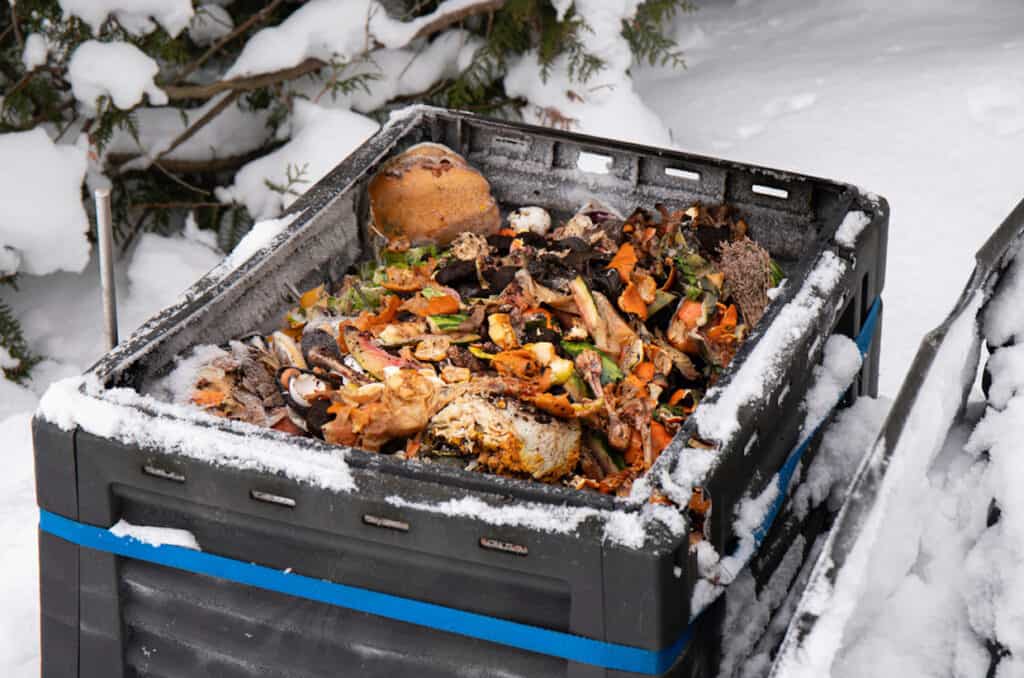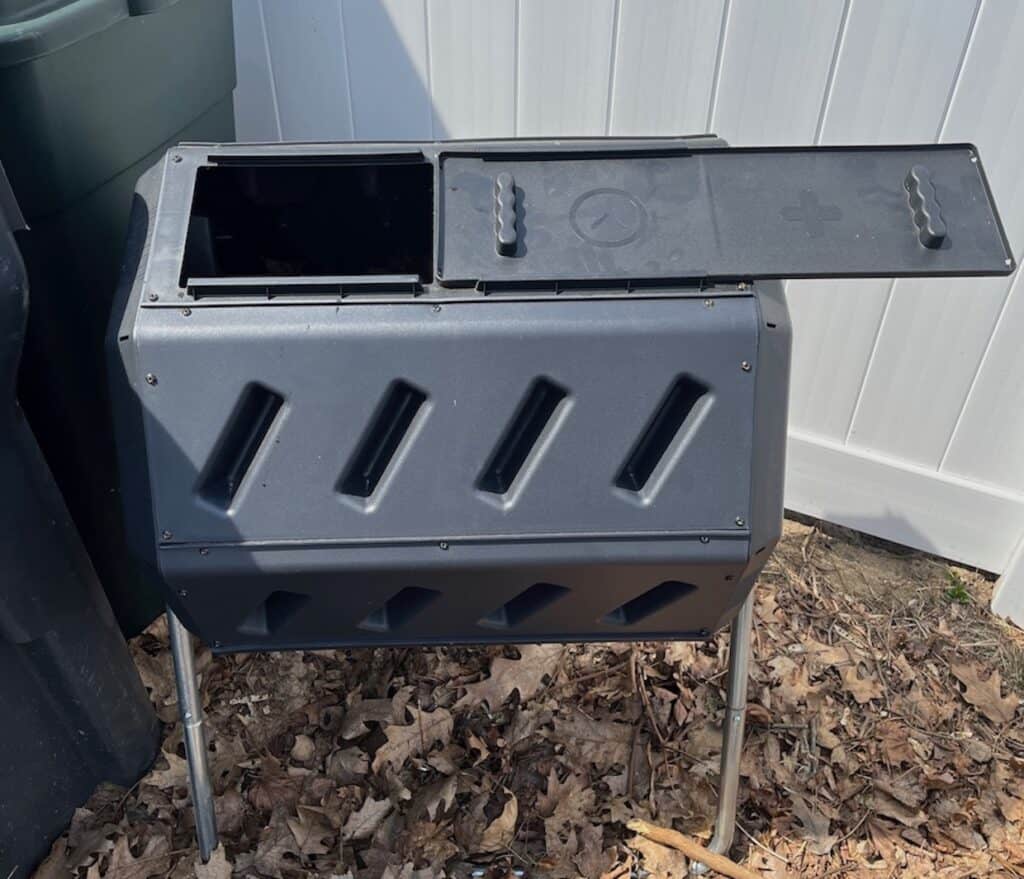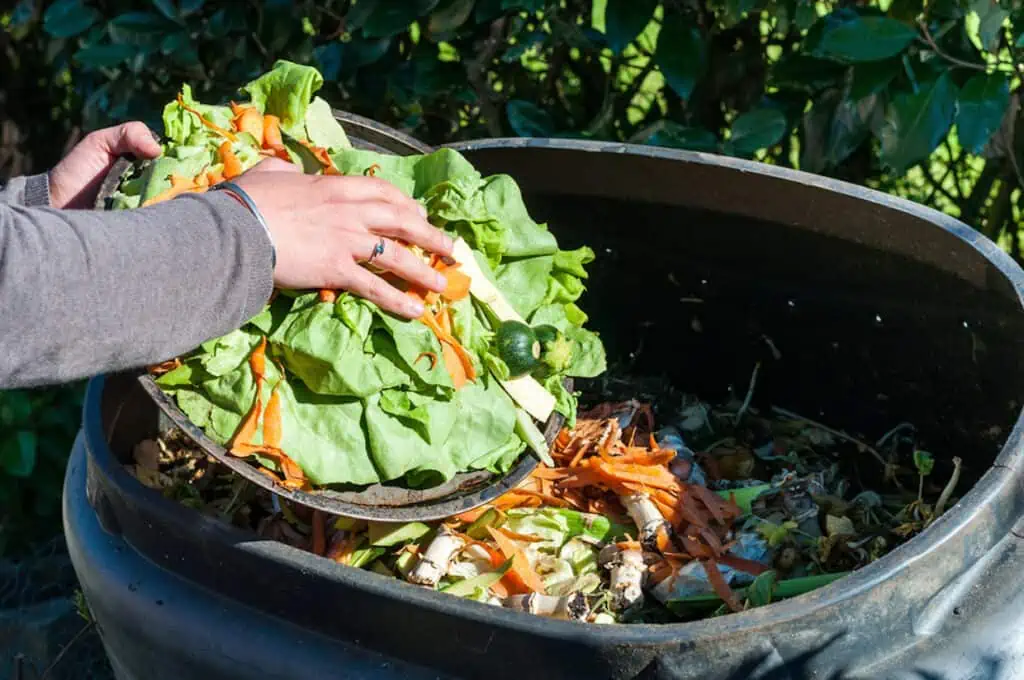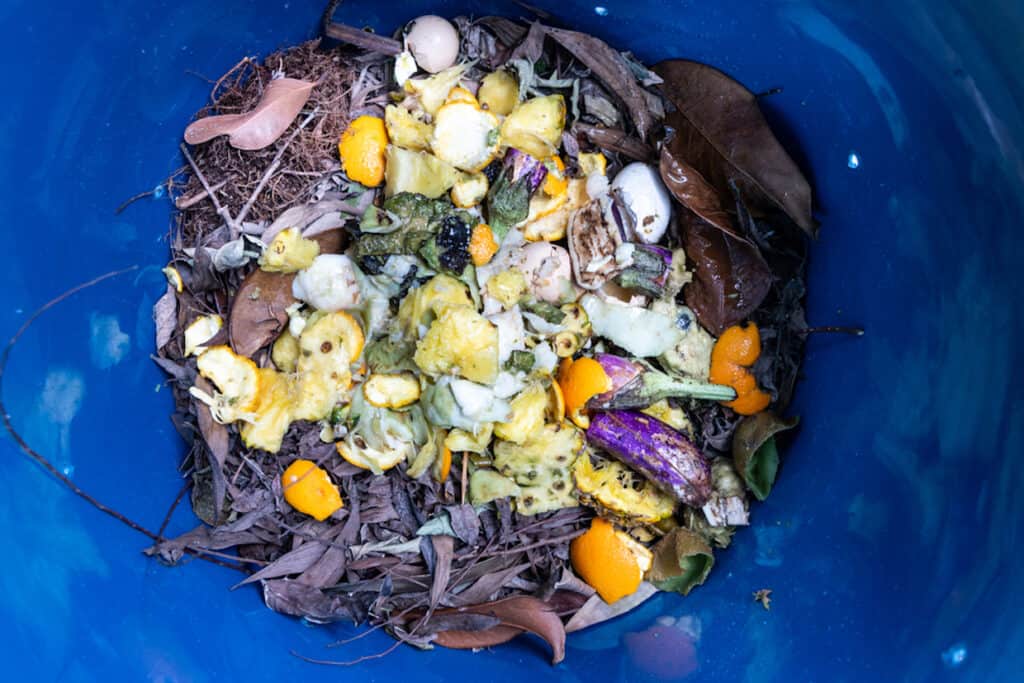If you like to recycle your food scraps, you may think that composting in winter is impossible. Perhaps you assumed that working a compost pile is something you can only do during warm weather. Well, think again. This guide explains how it is, in fact, possible to continue composting all year long, even through the coldest, shortest and darkest days of winter.

Composting in winter
There may be a few reasons why you wouldn’t want to continue composting in winter. For instance, you may not want to deal with bringing kitchen waste to your compost bin or pile when it’s freezing outside.
However, if you can make winter grilling work for getting dinner on the table, you can surely make it a priority to continue adding to your compost pile. Plus, if you dress properly in warm clothes and good boots, there is no excuse.
Just because it’s winter doesn’t mean that the first step in the composting process — collecting kitchen scraps — has to change at all. “Our composting routine in the winter is the same as in summer,” said Anne Mauney of FANNEtastic Food. “We keep a small countertop bin inside to put our compostable items in. Then, when it’s full, we bring it out to our large backyard compost bin and empty it.”

Make your compost bin easier to access in winter
It may be the case that your bin isn’t as easy to access in winter as it is for Anne. Maybe you have a big yard, and you can’t get to it when there is snow or ice on the ground.
“Move it to a more accessible spot,” said Kate Garland, a horticultural professional at the University of Maine Cooperative Extension. For those with a tumbler composting bin that sits on legs, that’s an easy fix. You can just drag it to a different spot.

However, that may not work for everyone. For instance, when you decided to start composting, did you create a compost pile in your yard using wire fencing or wood palettes secured together? Well, you can’t really move those.
So, instead, you can create a temporary winter compost bin that is closer to your house. Garland suggested using a trash can where you can place your food scraps.
Pro tip: choose a bin on wheels. That way, when it warms up — and you can access your permanent pile more easily — you simply have to wheel the bin to where you want to empty it.
If you lack space for an extra garbage can but have plenty of room in your basement’s chest freezer, consider using that instead. Garland said you can store kitchen compost in zip-top plastic bags or reusable containers in the freezer until spring thaw. Then, you can remove them from the freezer and empty them in the backyard compost pile.
Understanding the composting process during cold weather
Besides the challenge of getting to your compost pile in winter, composting in cold weather requires another level of understanding about the whole process. At its most simple, it is this: things simply don’t break down as quickly in cold temperatures, if at all. That’s because organic material needs heat for the decomposition process to happen.

It helps if temperatures get above freezing during sunny days. However, when temperatures drop at night, your compost bin loses all the heat it might have gained during daylight. Even so, there are steps you can take to make it easier for the organisms in the bin to continue doing their job of breaking down kitchen scraps and yard waste, albeit at a slower pace than in other seasons.
Compost smaller pieces in winter
Whether you’re composting pumpkins after Halloween or tomato plants after the first frost, it’s always a good idea to break items up before composting them. In winter, this is even more important.
“We cut up waste into smaller-than-usual pieces,” said Dan Morris of Fire and Saw. He does this because he knows the smaller pieces will help the decomposition process, even when the outdoor temperature is on the cold side.

Garland from the University of Maine approves of this technique. “By cutting food waste into small pieces,” she said, “you’re increasing the surface areas that the micro- and macroorganisms have to work on breaking things down.” In other words, you make their decomposition job easier when you give them smaller pieces to work with.
Continue adding your greens and browns
Proper composting practice dictates that you add even amounts of green and brown material to your pile or bin. You’ll do this by layering greens and browns just like you might with ingredients when making lasagna.
The so-called greens are the food scraps from your kitchen. The so-called browns — which are sometimes a color other than brown — are there to balance out the moisture level. A moist compost smells bad and won’t decompose easily. Also, the browns provide food the microorganisms need for decomposition. Basically, whenever you add greens to the compost, add a layer of browns, too.
What are some browns you can use?
- Dried leaves.
- Wood chips.
- Grass clippings.
Some paper and cardboard products also work for those browns. For example, you can use paperboard egg cartons. You’ll want to rip the egg cartons into small pieces — assuming you have no plans to recycle them into eco-friendly toys.
Another option is to use paper from your cross-cut shredder. However, you should add only uncoated shredded paper. Anything coated with plastic or synthetics will not break down during the decomposition process.
Final thoughts on composting in winter
Come spring, you can take all of the greens and browns you kept over the winter and add them to your regular compost pile. If you ever doubt the value of composting — in winter or at any other time of the year — consider this U.S. Department of Agriculture stat: food scraps and yard waste make up 20% to 30% of the waste stream. By composting, you keep these materials out of landfills. Plus, if you pay for garbage pickup, you’ll save some money, too, by producing less trash.
Leah Ingram is the author of 15 books, including “Suddenly Frugal: How to Live Happier and Healthier for Less.” She’s been composting at home for decades, and shares green and frugal living tips at Southern Maine on the Cheap.